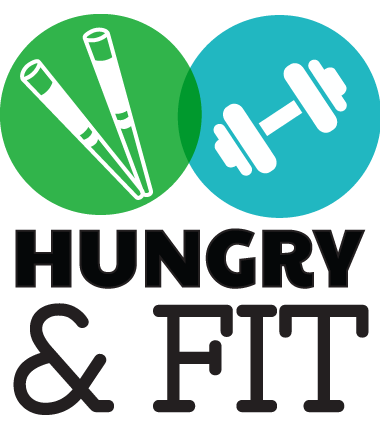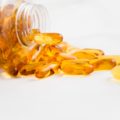Like many topics in nutrition, soy is one that is not well understood, with some sources stating it is great for health, while others recommended you avoid it. In this article, we will take a balanced look at the evidence behind soy so you are in a good position to assess whether including more soy in your diet would be a smart decision.
Health Benefits of Soy
Soy beans, otherwise known as edamame, are part of the legume family, and can be eaten in their natural state or can be processed into other foods such as tofu, miso, tempeh and even soy milk. These foods possess a unique set of nutritional benefits as we will explore in detail below…
Nutrition
Soya beans and their associated products have grown in popularity in recent years, mirroring the rise in vegetarianism and veganism. This is no coincidence as soy beans are one of the very few non-animal derived, complete protein sources. The term ‘complete protein’ is given to foods that contain all nine of the amino acids that the body cannot make and so it is essential they are provided through the diet. Even if you don’t follow a plant-based diet, soy makes for a great meat alternative as it provides high amounts of protein whilst being low in saturated fat and cholesterol.
Staying with the topic of fat, soy beans are a great source the essential fat alpha linolenic acid. Also known as ALA, this omega 3 has been shown to possess powerful health properties related to the cardiovascular system, brain and the joints thanks to its anti-inflammatory effect. What is more is that this fat can help create the two other omega 3s EPA and DHA which are only found in fish and seafood – another benefit for vegetarians.
Like other members of the legume family, soy beans are packed with fiber, as a 100g serving provides 6g. It is well-known that the majority of people fall well short of the recommended 30g of fiber per day, so including more rich-fiber foods like soy beans can only be a good thing. Heart disease, diabetes and bowel cancer are just a few examples of major diseases that you are less likely to suffer from if you have a fiber-rich diet.
Soy beans are also revered for their nutrient density as they boast a range of vitamins and minerals. Of these essential nutrients, calcium and iron are the ones of note. Everyone knows that calcium is crucial for strong bones and teeth. However, not many realize that calcium is also needed for muscle function, healthy digestion and metabolism. Similarly, iron is universally recognized for its importance in oxygen transport, but it also plays a key role in immune and cognitive functioning.
Phytoestrogens
Although popular with both genders, soy is increasingly used by mature females. The menopause is a natural part of the aging process and is characterized by hormonal changes that can lead to symptoms including, but not limited to hot flashes, night sweats and irregular mood.
As we found earlier, soy is remarkable as it is one of very few complete protein sources that is vegan-friendly. Another remarkable aspect of soy is that it contains something that scientists call phytoestrogens. These specialist compounds, widely known as isoflavones, are structured very similarly to the estrogen found in the body and can therefore mimic its role.
Estrogen is known to have a protective effect on something known as “bone mineral density”, a measurement of bone strength. As estrogen levels decline, so too can the strength of the bones, which puts females at a greater risk of osteoporosis and fractures. Due to soy boasting numerous plant-based estrogens alongside calcium, it should come as no surprise that research studies have shown a soy-rich diet is protective against bone weakening.
With regards to hot flashes in particular, evidence suggests that menopausal women in the US and UK are three times more likely to suffer from these when compared to women from Asian countries. Although this is not scientifically proven, experts are pretty confident that it is the dietary intake of soy to thank for this.
Breast Cancer
This is one area where soy is controversial. As soy can mimic estrogen activity, some scientists have raised concerns that soy consumption could increase the risk of breast cancer which is a ‘hormone-sensitive’ type of cancer. Although they accept that conclusive research is required, the American Cancer Society states that soy is safe for both the general population and breast cancer survivors. They even went a step further to say that soy can have a protective effect, as after all, it has been shown in epidemiological studies to even lower breast cancer risk.
Again, Asian women who have a relatively high intake of soy and soy isoflavones have been shown to have lower incidences of breast cancer when compared to western women. But what about the research linking soy to breast cancer? One convenient factor that is often missed by those claiming soy can lead to cancer is that the only evidence has been shown in animals and even this evidence is weak at best.
Experts believe that the greatest benefits of soy on breast cancer protection will be seen when soy is included in the diet from a young age. So if you are interested in your health, it will be a good idea to add in a variety of soy foods as soon as you can. In the next section we will find out how.
How to Add Soy to the Diet
As mentioned earlier, soy beans can be eaten whole in their natural state or can be found in items like tofu, miso and soy milk. Whole soy beans (edamame) are widely regarded as the best way to consume soy, with a 100g (cooked) providing 11g of protein, 6g of fiber and 70mg of isoflavones – which is in the range provided in a typical Asian diet.
Tofu is also nutritionally dense, with 100g being high in protein, while also providing over a third of your calcium and iron needs for the day. To complement this, 30mg of isoflavones is present. Soy milk, which is becoming a popular alternative to cow’s milk, contains 7 grams of protein and 25mg of isoflavones in a 250ml portion.
So to get more soy into your diet for the betterment of your health, why not try adding some edamame beans as a side dish to your main meal, include a portion of tofu in a stir fry or use soy milk in hot beverages or with breakfast cereals. If you don’t like consuming soy through the diet, but wish to benefit from their phytoestrogen content then a soy isoflavones supplement is a viable option. It must be said however that soy is not for everyone, and is actually one of the 14 most common allergens, so obviously do not consume soy from foods or supplements if you are allergic.
Summary
Hopefully this article has cleared up any misconceptions around the topic of soy and has encouraged you to include more in your diet. As a lot of the world’s health issues can be partially attributed to poor intake of protein, fiber and calcium, soy certainly has a role to play in the prevention of common ailments.
Aside from general health, soy holds the rare ability of being able to naturally ease women through the menopause, so for those looking to avoid the side-effects of hormone replacement therapy (HRT), soy isoflavones are definitely worthy of consideration.
To learn more about soy isoflavone supplements please visit https://www.simplysupplements.co.uk/soya-isoflavones-5000mg








